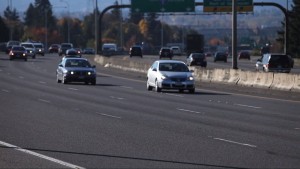Washougal City Council passed a resolution April 8, 2013 requesting Washington state lawmakers and the Washington Department of Transportation to look for a more “cost-effective” option to the $3.4 billion CRC megaproject that would replace the existing I-5 Bridge. The city council was criticized by CRC proponents who according to Shoemaker stated,” …it is an embarrassment for the city council to even be talking about this (the CRC Project).” According to Council Member Dave Shoemaker, this is an attempt to shut the CRC conversation down. Shoemaker drew parallels between the book “Rules for Radicals” by Saul Alinsky, and the procedures used by CRC proponents – especially rule 13: “pick the target, freeze it, personalize it, and polarize it.”
Consider the following statements: Do these follow Alinsky’s rule 13?
Secretary of Transportation Ray LaHood told Washington state lawmakers that they must commit hundreds of millions of dollars toward the estimated $3.1 billion Columbia River Crossing project this year or risk losing up to $1.2 billion in federal support.
Governor Inslee vetoed the Washington State transportation budget, allocating $81 million to the CRC. He took the position that no other options will be considered.
Senator Patty Murray was quoted saying, “A light rail component is absolutely necessary to secure federal funding for this project, and any further attempt to change the current bridge design will cause years, if not decades of delay.”
John Charles, President and CEO of Cascade Policy Institute outlined the CRC process this way:
 “I’ve been involved with this project since about 1996 and have testified at many meetings in both states. The fact is, real public input was never valued by the insiders running the show, it was simply tolerated as a cost of doing business. They hired a small army of public involvement specialists and hosted hundreds of meetings, but the key decisions were always off-limits to any serious conversation, namely:
“I’ve been involved with this project since about 1996 and have testified at many meetings in both states. The fact is, real public input was never valued by the insiders running the show, it was simply tolerated as a cost of doing business. They hired a small army of public involvement specialists and hosted hundreds of meetings, but the key decisions were always off-limits to any serious conversation, namely:
• There must be light rail
• There must be a new bridge
• The new bridge cannot provide any new through capacity on I-5 (only 3 lanes in each direction, same as today)
• There will never be a 3rd, 4th, or 5th bridge in the region, because that would promote “sprawl” (whatever that is).”
Charles continues, “once you take those things off the table, there is not much left to talk about. Later on they decided to impose tolling to help pay for light rail, and once they did that, no serious conversation was ever allowed about toll rates, the purpose of variable pricing, and the ultimate use of toll revenue. It was really demeaning testifying at these show trials, where they could barely restrain themselves from rolling their eyes at the public input.
In the last 3-4 years, they became much more blatant about shutting down the public, because “we have to build something” and “time is running out”, etc. The so-called “hearings” in the Oregon legislature in February (for the $450 million in funding) were a travesty.”
In conclusion, Charles stated, “the whole thing has really been a total failure of political leadership by the two governors.”
Senator Murray, recently addressed parents, teachers and students at the Patricia Nierenberg Child Care and Early Learning Center. In her speech Murray stated the Columbia River I-5 Bridge was unsafe. Council Member Shoemaker states that proponents like Murray are “attacking people objecting to the bridge in its current plan, which is far more than it needs to be, they are being ridiculed, made fun of and warned if the bridge collapses, those critical of the project – they will be blamed. So that, instead of debating the bridge on its issues, they are trying to shut down the conversation.”
The Washington legislature has gone into double-overtime in an attempt to prepare the state’s budget. Governor Inslee said, “The budget is our primary duty. That’s where our focus should be. They (the legislature) need to come to a common-sense position, so that we can fulfill the obligation to our kids.”
Funding the CRC project is one of the many line items that are still being considered. And according to Shoemaker, Washington State Legislators are wanting input from Clark County residents.










